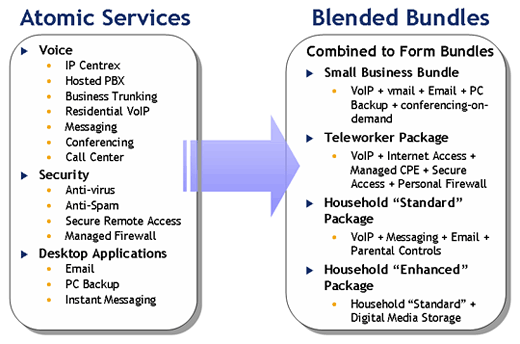|
|

By
Doug Bellinger
Introduction
As Service Delivery Platforms (SDP) for IMS-based services are gradually embraced by providers, the role of operations support systems (OSS) is rightly being re-examined. Most SDP vendors are positioning their offerings as encompassing service creation, orchestration, and execution, as well as back-office functions that traditionally have been handled by OSS solutions. Despite this overlap, there remains an ongoing need for scalable, standards-based OSSs that can complement the flexible service delivery model defined by the SDP vendors and help providers get new services operational quickly.
Today’s Back Office Realities
As a result of the ongoing process of circuit-to-packet migration, service provider back offices have become enormously complex. To meet the market requirements for legacy services and the rapidly growing list of IP-based services, the vast majority of the world’s leading providers have each implemented dozens (and in some cases, hundreds) of OSS systems.
The result in many cases is a hodgepodge of systems that has the potential to cause major operational headaches, including frequent operator interventions, high error rates, intricate transaction rollback scenarios, complex system integrations, painful upgrade scenarios—and, ultimately, ballooning operations costs.
|
|
The vast majority of the world’s leading providers have each implemented dozens (and in some cases, hundreds) of OSS systems. |
|



(IMS) standard as the architecture best able to support a wide variety of voice, video, and data services, is putting even more strain on this already taxed service delivery environment. By definition, IMS services are complex to operationalize, as they promise increased mobility, personalization, contextualization, and multimedia interaction. In an IMS environment, bundles will not simply be based on price, they will be made up of complementary “blended” services targeted at specific user communities, as shown in the below figure.
The most significant back-office challenge for providers with the advent of these new services is to continue to meet the ongoing service delivery requirements of their legacy
|
|
|
 Blended Bundles of IMS Services
Blended Bundles of IMS Services |
|

The rapid rollout of VoIP and other IP services, combined with the widespread acceptance of the IP Multimedia Subsystem |
|

services, while simultaneously scaling up their operations to handle the complexities inherent in delivering IMS service bundles.
article
page | 1 | 2 | 3 | |
|
|





